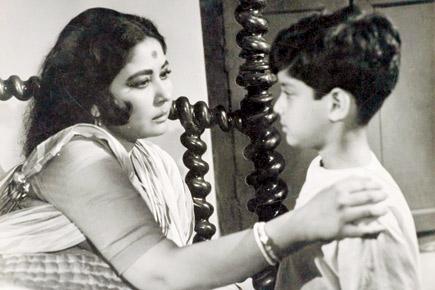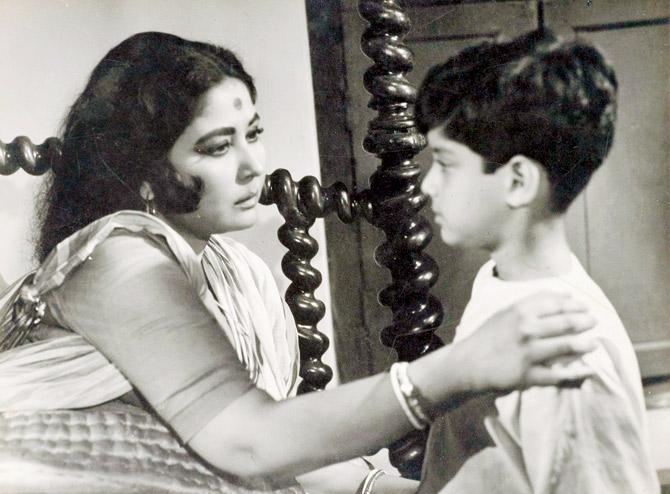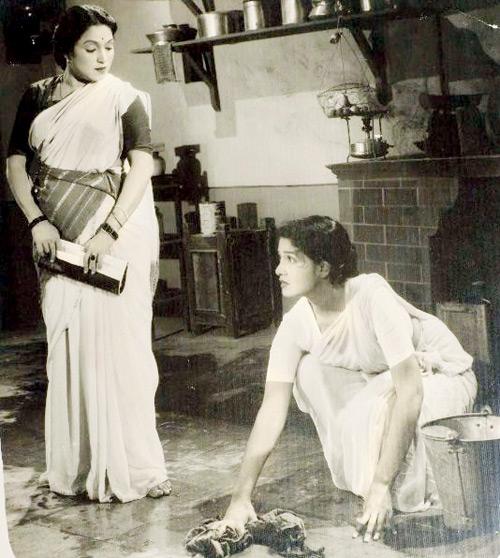Google Cultural Institute's latest online exhibition pays rich tribute to Indian cinema's most powerful and iconic characters


A lobby card still featuring Meena Kumari and Sachin, from the Hindi film, Majhli Didi (1967). COURTESY/Museum of Art & Photography (MAP, Bangalore)
This week saw actress Kangana Ranaut prove what a badass she can be. Sixty years ago, Lalita Pawar had already made the cut for this otherwise, unenviable title. Her twitching left eye notwithstanding, Pawar could pull off any role that demanded her to play the evil 'other', especially the wicked mother-in-law.
ADVERTISEMENT
The late actress' iconic character gets a fitting tribute in Google Cultural Institute's latest online exhibition titled Faces That Launched a Thousand Movies (1949 – 1984).
Curated in association with the Museum of Art and Photography (MAP) in Bengaluru, the photo exhibit flaunts a rare compilation of lobby cards, photographic stills and videos, totalling 29 in all, which celebrate some of Indian cinema's most beautiful and revered faces. So, while there is the haughty Pawar, who appears to be taking on a demure Sulochana Latkar - seen scrubbing a floor - in a scene from the 1956 film Sajni, there is also the gorgeous Vyjayanthimala, posing as a village belle in a still from Jashan (1955).
Meena Kumari, Nadira, Waheeda Rehman, and later Jaya Prada magnify the evolution of the faces that graced celluloid with their feminine energy.

A lobby card still features Lalita Pawar and Sulochana Latkar in Sajni (1956). COURTESY/Museum of Art & Photography (MAP, Bangalore)
It took Shilpa Vijayakrishnan, curatorial associate and researcher with MAP, more than two months to pore over the vast material on Indian popular art that the museum had gathered in the last few years. This particular exhibit, says Vijayakrishnan, emerged from the private collection of art connoisseur Abhishek Poddar, the brainchild behind MAP.
"The main idea was to showcase how popular art forms are part of our visual culture and everyday art, and how they are important enough to be appreciated," says Vijayakrishnan. For the Google exhibition, the focus was only on women's representation in popular art. "I looked at works that began from the early years of cinema, mostly before independence, largely because during this period there seems to be a lot of conversation and pubic debate around nationalism and the state of women in relation to that. How cinema reflected that or even challenged or subverted it is essentially what this exhibit is trying to map," she adds.
The lobby cards played a key role in tracing this change vis-a-vis cinema. Once an important marketing device, the lobby cards - a more compact version of film posters - were usually pinned up in the lobbies (thus, the name) and premises of cinema halls.
Vijayakrishnan can't put a finger on when Poddar first started collecting them, but says that it has been over decades. What's interesting about these cards is that while there is fair amount of focus on the movies, later on, the trend was to carry single photographs of actors/actresses associated with certain kind of roles and characters.
"The stereotypical image that led to their stardom would often be played up in the lobby cards," says Vijayakrishnan. "This makes the lobby cards of great historical value," the curator adds. The wide menu of visually compelling photographs in this starry exhibit enables Vijayakrishnan to bring this point home. "Here, we've tried to trace the trajectory of female stardom and glory at a particular point in time, which is very different from the contemporary notion of the same," she ends. These pictures without doubt make for a good cultural argument.
The exhibition can be viewed on www.google.com/culturalinstitute
 Subscribe today by clicking the link and stay updated with the latest news!" Click here!
Subscribe today by clicking the link and stay updated with the latest news!" Click here!







